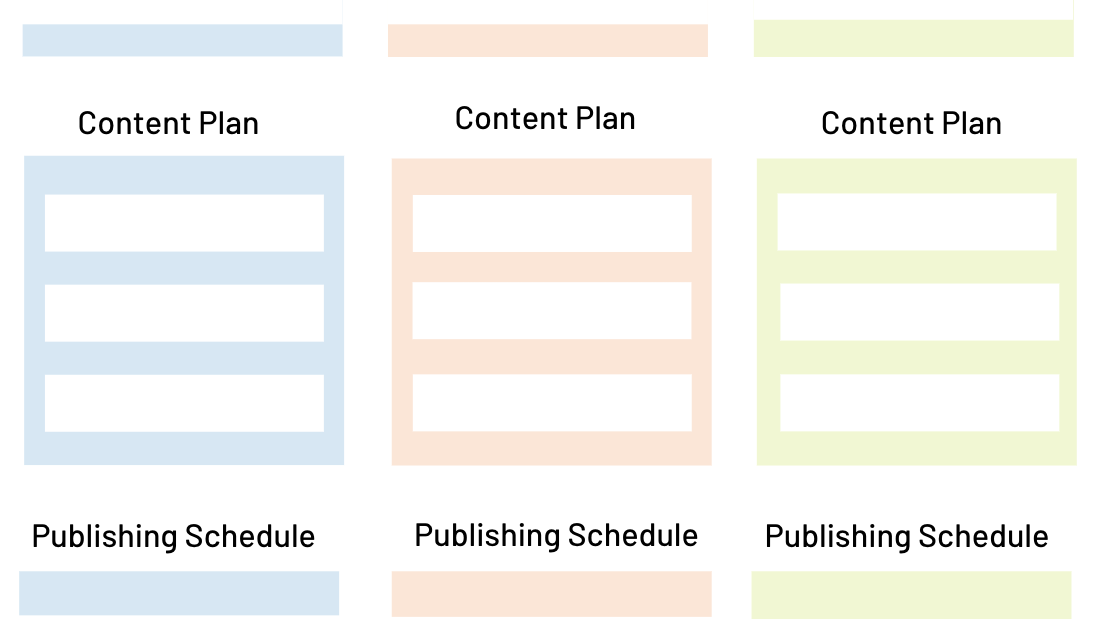Productivity Workflows for Blog Managers
A typical day in the life of a blog manager.
You and your boss set the goal of publishing 10 blog posts this month and boosting traffic. You agree that this goal leaves room for creativity.
At 9:00am, you have a great idea for the first blog and immediately start outlining. You do the keyword and topical research needed to crank out a 800 word blog post. You make sure it’s well-organized and easy to read. You paste it into the website editor and begin formatting. You realize it’s 6pm and you’re completely brain fried before you even add images, publish, and promote on social media.
Tomorrow morning, you’ll have to finish up that post and then go back to the drawing board for the next one. And you’re already dreading tomorrow as you fall asleep.
Sound familiar? There are many negative symptoms of this writing process including burnout, wasted time, and low creativity. In this blog post, we’ll break down some ways to make your job more productive and enjoyable. Here’s how to be more productive at work as a writer.
Tap into the flow state of mind to stay productive.
We all know that in order to stop the spinning wheel sensation, it’s important to start with a detailed plan. Do you know why?
According to best-selling author Steven Kotler, you’ll need to eliminate distractions in order to stay productive and achieve the “flow” state of mind. This means becoming fully immersed in your work (like that time your work day flew by in 2 seconds).
But distractions go beyond your dog in the room and the lawn mower outside. Distractions also come in the form of your brain wandering. Wondering if you’re working on the right thing, searching for ways to measure progress while you’re working, or picturing the huge pile of work ahead and growing anxious are all human nature.
This formula will eliminate distractions and prevent your wheels from spinning.
Step 1: Set a large overarching goal. Do you want to build thought leadership in a certain area? Boost sales of a particular product? Increase the pace at which you publish blogs?
Step 2: Set smaller task-oriented goals to achieve this overarching goal. Because these small goals are aligned with the big picture, you can be more present by working on these without questioning their purpose. You also don’t have to question which task comes next.
For a blog, these tasks might involve planning and brainstorming, writing, editing, and publishing.
Step 3: Create feedback loops. Daily feedback helps you stay focused. If not, you’ll subconsciously go searching for ways to validate your work. Again, it’s just human nature; you might find yourself comparing something you wrote to a competitor for an hour, or spending hours choosing an image.
Have your boss or a peer look over your work as you go. Share your ideas at weekly meetings and make sure you aren’t working in a silo.
Now that you’ve determined your tasks, batch them.
It’s time to fight the temptation of creating a blog from scratch and not leaving your computer until it’s finished. Batching similar tasks into time blocks will help you glide through your work plan and reduce burnout.
If you’re batching tasks, you might take one day to plan multiple blogs, one day to outline multiple blogs, and one day to write multiple blogs. Essentially you’re grouping tasks by the tools you’ll use and workstyle - rather than grouping tasks by subject matter. When you group tasks by subject, you’re more likely to spend time opening and closing new tabs and reframing your mindset as you go.
The benefits of batching tasks include:
Reduced mistakes
Reduced time switching tasks
Reduced distractions (which maintains the flow state of mind)
A sample plan for writing 3 blogs in one week.
Here’s how I might produce 3 lengthy blog posts in 1 work week. First, I’d take a minute to plan the overarching goal: Write 3 blogs this week targeted towards blog managers. Then, I’d follow this outline to quickly accomplish tasks.
Day 1 (first half) Brainstorm
Browse other blogs
Talk to other writer friends/ look at forums
Listen to a marketing podcast
List 3 ideas
Day 1 (second half) Outline
Determine blog titles for each idea
Quickly research each topic to build points and create outlines
Day 2: Write
Start filling in outlines and drafting in Google docs
Day 3: Write
Continue filling in outlines and drafting in Google docs
Day 4: Optimize and edit
Keyword research (note - it’s better to find keywords that match the topics you like - not the other way around)
Keyword optimize headings/copy and plan URLs
Ensure blogs are the appropriate word count and edit grammar
Day 5: (first half) Format and publish
Paste into website editor
Add images and meta tags
Double check grammar and copy
Publish
Day 5: (second half) Promote
Create and schedule social media posts for each blog
I can assure you that if I were to conceptualize, write, and publish each blog one after the other, I would not be able to finish in five days. Or if I did, the quality would be low.
That’s because batching tasks works like this: if I complete one outline, I build momentum and complete the next two in half the time. I also feel motivated that I got so much done so quickly, which continues to build momentum.
All in all, the rhythm in which you work can help you stop wasting time, get into a more focused and creative mindset, and ultimately enjoy your day.












